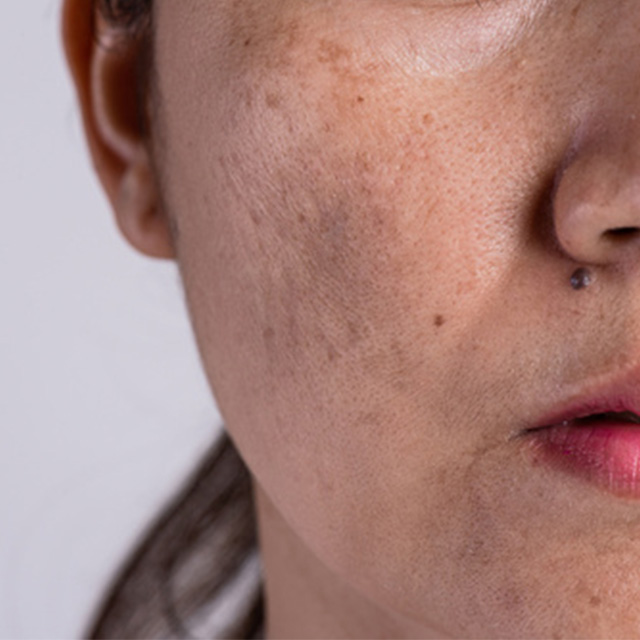
Discolouration might be a cosmetological problem. Why do they occur? They emerge after overexposure to the sun, due to hormonal problems and natural ageing process. Discolourations are darker that the rest of the tint.
There are variety of discolouration types:
- Freckles – are clusters of concentrated melanized cells. They are scattered over a body and mostly appear on uncover spots of the body. They are small and similar to the head of They are mostly yellow or brown-ish. They appear over the face, décolletage, forearms and arms.
- Melasma (ostudy)- they are mostly brown, symmetric and appear on cheeks, forehead, really above the lips or neck.
- Age spots- they might be natural or acquired. They are small and scattered over backs, chest, forearm, hands, faces and forearms. They are bigger than freckles and their boundaries are more visible. They might occur after overexposure to UV light or as a natural effect of time passing by. They might occur singly or numerously. They are to be seen on uncovered parts of the body.
- post-inflammatory, hyper-pigmentation – they are the consequence of dandruff, acne, smallpox or psoriasis
What is a scar? Some people say that it is a souvenir of life. They occur as an effect of an injury, or a surgery. Some of them disappear, some stay for long. They are the natural results of healing process. During this process connective tissue cells produce a lot of collagen, that is a basis for building scar. While fibres multiply, the skin is covered with the newest epithelium. If the process is disturbed, the scar might be shaped badly.
The types of scars might be divided into:
- hypertrophic scars- they occur due to long healing process and excessive synthesis of collagen. They are mostly red, thick they don’t grow beyond the boundaries of the wound but above the skin. They might get smaller after some time.
- Keloids- they are thick and fibrous, tumour-like, which extend beyond the wound’s original limits. It’s a more serious form of scarring, because keloid scars can continue to grow.
- Atrophic scars- they have round shape and occur below the skin level building grooves. They are mostly the effect of acne or smallpox. They are related to disturbed synthesis of collagen. Stretch marks are also atrophic scars.
Recommended treatments:
- Micro-needling mesotherapy >> – DERMAPEN 3 >>
- Vacuum mesotherapy >> – VITAL INJECTOR >>
- Microneedling Fractional Radiofrequency >> – FOCUS DUAL RF+HIFU >>
- Electroporation Electro-Microneedling >> – EPN >>
